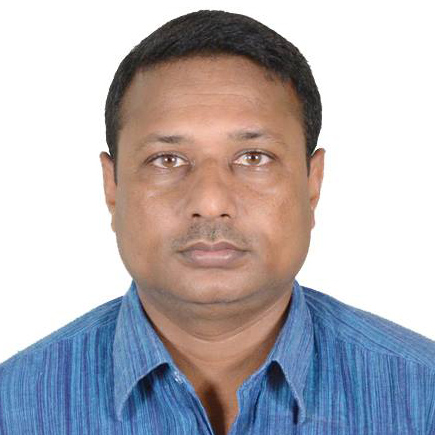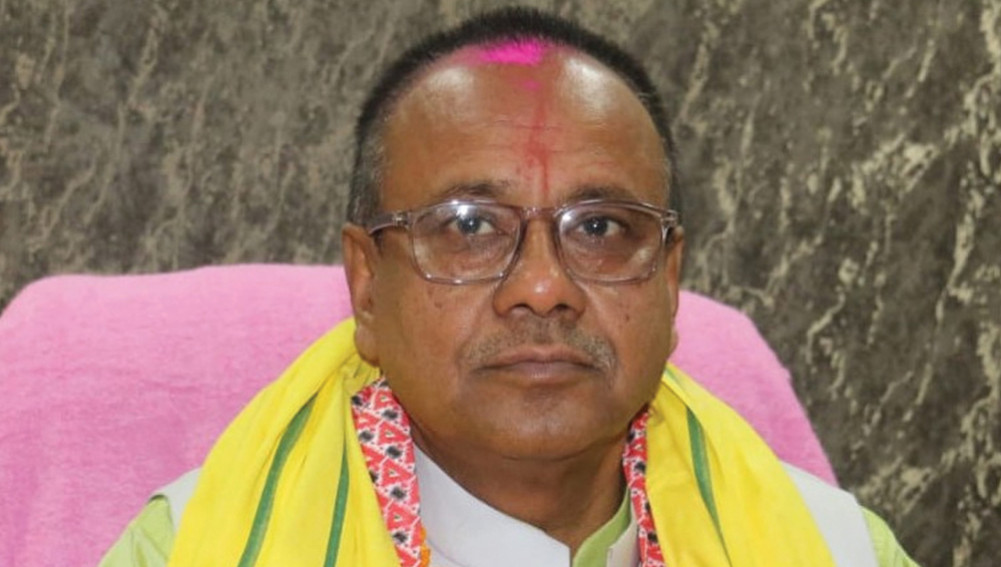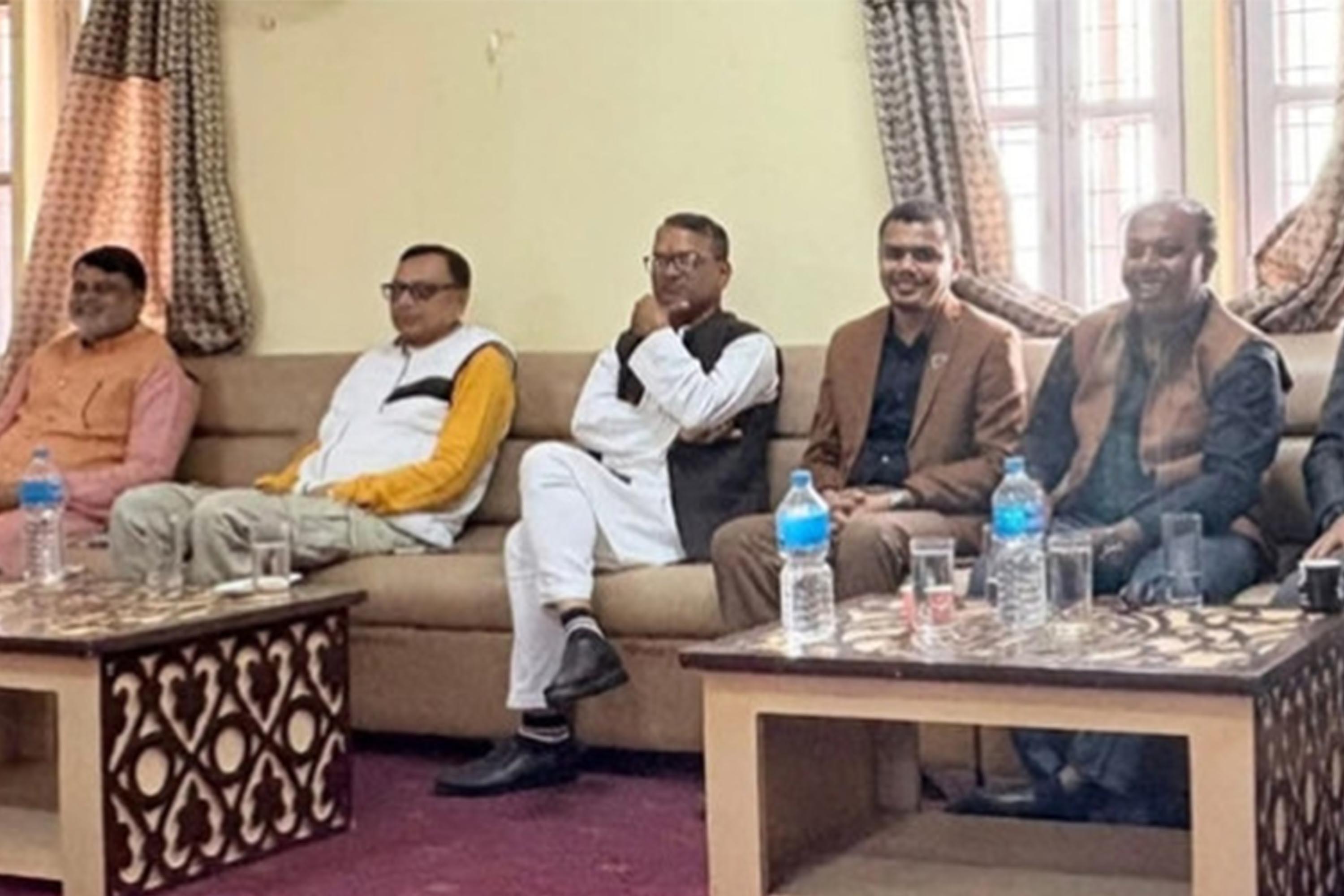Madhesh Province
Nepal needs another international airport. So why is Nijgadh being held up?
Local residents want the project to take off, hoping economic returns. But there are also nationwide protests against the plan, mainly over the number of trees that have to be felled to create space for the airport..jpg)
Laxmi Sah
Twenty-four years ago, the government initiated discussions to construct a second international airport in Bara, a Tarai district, as an alternative to Nepal’s only international airport in Kathmandu.
The decision followed the deadliest aviation disasters of Thai Airways and Pakistan International Airlines in 1992. This gave momentum to the discussions of an alternate airport and how the difficult topography of Kathmandu poses a challenge for even experienced pilots to land.
Although the project has been in discussion for more than two decades, the plan gained traction after a Turkish Airlines flight skidded off the runway in March 2015, causing the Kathmandu airport to close down for four days.
But the project for Nijgadh International Airport got embroiled in a controversy after the environment impact assessment showed that more than 2 million trees would have to be cut down to build the facility. For the past year, environmentalists have been campaigning, arguing that the damage the project will cause to the environment and biodiversity would be irreparable.
On December 6, a single bench of Supreme Court Justice Tanka Bahadur Moktan issued a stay order asking the government to put the construction on hold. Nine individuals, including Ranju Hajur Pande, an environmentalist, and former secretary Dwarika Nath Dhungel had filed the writ petition.
Here’s everything you should know about the Nijgadh Airport, and what’s being done to implement the long-overdue project.
Why is Nijgadh an alternative airport?
In Kathmandu, the country’s sole international airport has reached its saturation point as it handles more than 7 million domestic and international passengers with nearly 130,000 take-offs and landings annually.
Tribhuvan International Airport stands at an elevation of 1,338 metres above sea level in the bowl-shaped Kathmandu Valley surrounded by four hills: Shivapuri, Phulchoki, Nagarjun, and Chandragiri. That means the airport has a single approach system for international airlines putting a limit on the airspace leading to air congestion and delays.
According to an Asian Development Bank estimate, international passenger movement in Kathmandu will swell to 7.29 million in 2028. By 2035, the volume is expected to reach 9.92 million.
The Nijgadh international airport is planned to be the largest in South Asia in terms of area, covering 8,045.79 hectares when completed. The airport will be developed in three phases. The first phase of works is expected to take 10 years to complete. Post completion, the airport will be able to handle 15 million passengers annually and accommodate Airbus A380 super jumbo. By the end of the third phase, the facility will have a parallel runway enabling it to handle 60 million passengers annually. A 76-km Kathmandu-Tarai expressway will link the Capital with Nijgadh.
Why is Nijgadh a strategic airport?
“The new airport will facilitate India’s heavily populated states of Uttar Pradesh and Bihar. It will give rise to a new economic boom in the region,” said Eka Bahadur Shrestha, the coordinator of Nijgadh Concern Committee.
In July 2015, a four-member delegation from the Airport Authority of India visited Nijgadh for a site inspection. The delegation had informed Nepali officials that they were ready to invest in the project, either through the private sector, government funding or both—as deemed fit by the Nepal government.
As an international airport close to the border would be more accessible to the large populations of the Indian states of Uttar Pradesh and Bihar, India has shown interest, according to officials.
Earlier, during the International Conference on Nepal's Reconstruction, India’s former external affairs minister Sushma Swaraj had first disclosed India’s interest in constructing the airport in Nijgadh. Swaraj had said at the conference: "Work on construction of the Kathmandu-Nijgadh fast-track road and the Nijgadh airport with India's participation should be expedited."
What is the environmental and social impact of the project?

According to an environmental and social impact assessment carried out by the Tourism Ministry in February 2017, more than 2.4 million small and large trees will have to be felled to build the international airport in three phases.
In the first phase, the project will be developed on 2,500 hectares of the total proposed area. For this, 769,691 trees will have to be cut down. This environmental degradation of the area has drawn criticisms from various quarters, says Chandra Kishore Jha, a commentator who writes on environmental and socio-political issues.
What will be the consequences for the environment and wildlife?
Given the proposed airport’s proximity to the Parsa National Park, which protects endangered wildlife, conservationists say, the construction stands to destroy the natural corridor used by the wildlife. “Developing this large-scale project will have adverse environmental impact, causing irreversible damage to the ecology,” said Chandra Kishore.
The government should look at alternatives in order to minimise harm to the environment and to protect biodiversity, he said. Conservationists propose moving the project to a more feasible site or downsizing the airport area.
“A majority of streams in Bara originate from the proposed site for the airport. These streams irrigate hundreds of bighas of land in the southern belt. The airport construction stands to affect these water sources,” said Chandra Kishore.
The national park is home to hundreds of spotted deer, 18 to 20 tigers, four to six rhinos and more than 60 wild elephants. The construction stands to affect the wildlife in the region, said Baburam Gopali, former warden of the national park.
“If the biodiversity is disturbed, it will have a direct effect on native elephants. The elephants use the same migratory route every year and destroying the route will affect the annual migratory pattern of the wild elephants,” said Gopali, warning that the tigers could also leave the sanctuary because of increased human activities.
Park officials want two kilometres of the forest land to the west of the Bakeya stream and three kilometres of forest area to the south of the East-West Highway to be left untouched to conserve the wildlife.
Despite the concerns and constraints, the government has zeroed in on Bara as a site for the construction of the international airport with the tourism minister declaring in August this year that the airport “will be built where it has been proposed to be built”.
How will the damage be compensated for?
The Forest Ministry has presented a condition to the Tourism Ministry that the project executing agency will plant 25 saplings for every tree that is cut down. The Forest Ministry has also sought the economic cost of the impact on biodiversity. It has demanded an action plan on the types of saplings, where they will be planted, the time required for planting them and the body that will be responsible for it. On the social front, the project has identified 1,476 squatters in Tangia Basti who need to be relocated.
What is the progress so far?
Bijaya Yadav, an engineer at the Project Implementation Unit, said they are currently working on land acquisition, selection of consultants, a detailed project report, an environmental impact assessment, and other fieldwork.
In the past four years, the government has invested Rs590 million to fix the boundary and measure land plots, compensate landowners, fence the area and construct embankment in the streams, among other construction-related work.
In the southern part, a wire fence (around 14 km) has been installed. The construction of an eight-kilometre embankment along the Pasaha stream and Lalbakaiya river is in the final stage. The government had allocated Rs 1 billion for land acquisition.

Is the local community opposed to the project?
In the past, work came to a halt for a few months due to the locals’ protest demanding suitable compensation. So far, 54 percent of the families have received compensation.
The Airport Concern Committee has been asking the government to construct the airport at the earliest arguing that the facility is vital for the country’s prosperity. Representatives of the committee, and civil society and political leaders have appealed for the work to continue without obstructions.
Dhundiraj Uprety, coordinator of the Airport Concern Committee, said local residents want the project to take off and are not obstructing the plan as is widely believed. “It’s one of the government’s pride projects that will generate much income for the locals. The locals look at this as an opportunity for them. The reported obstructions concerned the compensation due to them from the government and not because they are against the project itself.”
In fact, the locals of Tangiyabasti have been protesting against the delays in work. “We have been staging demonstrations time and again. We want to see the project take off,” said Suman Thokar, a local.
Purushottam Paudel, another local, believes that conservationists should not create roadblocks to the success of this ambitious project. “They should let the construction works resume. We believe that this project will bring prosperity to the region.”
Bharat Bhandari, mayor of Kolhawu Municipality, agrees that the new airport will create job opportunities for the locals. “We support the project because we know it is beneficial for the local economy and also important for the country’s economic stability in the long run.”
What are the residents’ concerns?
Around 6,000 people (1,476 families) live in Tangiyabasti in Jitpur Simara Sub-metropolis Ward 16. The settlement is eight kilometres south of the East-West Highway. The Tangiyabasti residents have been demanding the government to relocate them to a safer and suitable location from the project site.
Government officials, however, say there are challenges in relocating the residents of Tangiyabasti immediately. Bijaya Yadav, an engineer at the Project Implementation Unit, said they are searching for a suitable area to move the settlement.
How will the airport benefit Nepal’s economy?
The airport will be an air hub joining 27 Asian cities and generate over 100,000 direct and indirect jobs, according to the detailed feasibility study.
According to aviation experts, the special air route planned for the airport passes over Mt Everest and every flight landing at the airport or flying over Nepal’s airspace would be able to see the world’s highest peak closely. This should be Nepal’s marketing strategy to attract foreign airlines connecting East Asia with the West to use the route. Nepal can earn by charging airlines for their flights in its airspace.
Experts said that flights connecting east to west can be shortened by around 30 minutes, saving huge amounts of fuel if airlines use Nijgadh airport for transit instead of the airport in New Delhi that is currently used.
Sanjiv Gautam, former director general of the Civil Aviation Authority of Nepal, says that based on the current traffic growth, after 15 years the Kathmandu airport will be fully saturated. “While the government plans to double or triple tourist arrivals and make tourism a key pillar of economic growth, a full-fledged airport near Kathmandu is vital,” he said.
Due to growing traffic, the monthly accumulated holding hours of international airlines before landing at Kathmandu’s airport is 125 hours. “This holding pattern will increase and that means airlines will burn more fuel and emit more emissions,” said Gautam.
Why does it make sense to build the airport in Bara?
According to the Airport Concern Committee, Bara was selected to host the new international airport because of its location. Birgunj, a trade hub in Parsa is only half-an-hour from the proposed site. The area is also close to Birgunj Dry Port and Special Economic Zone in Simara.
Uprety, the coordinator of the concern committee, said land in Bara is cheaper than most other areas that were shortlisted for the airport. Prices for the land plots at the site range from Rs 241,000 to Rs 460,000 (per kattha). “Since the land price is cheap here, it is easier for the government to acquire land,” said Uprety.




 6.84°C Kathmandu
6.84°C Kathmandu





